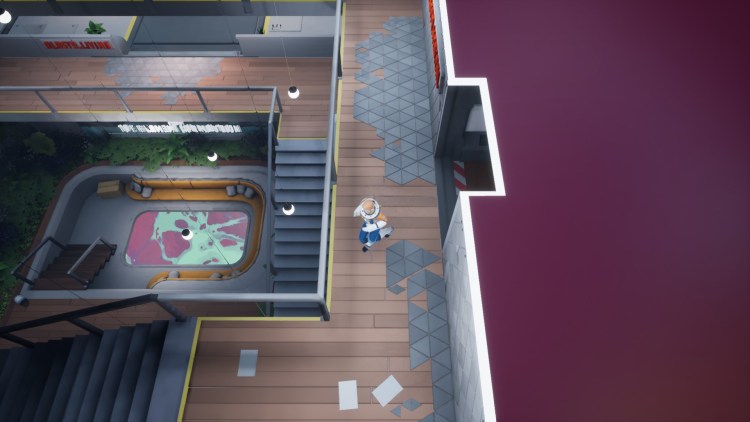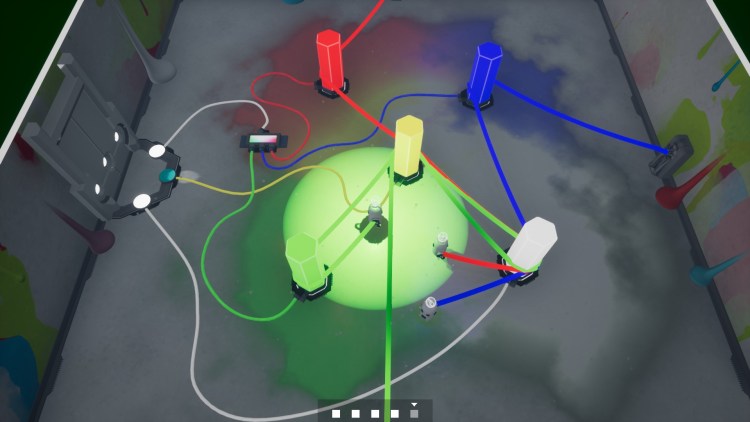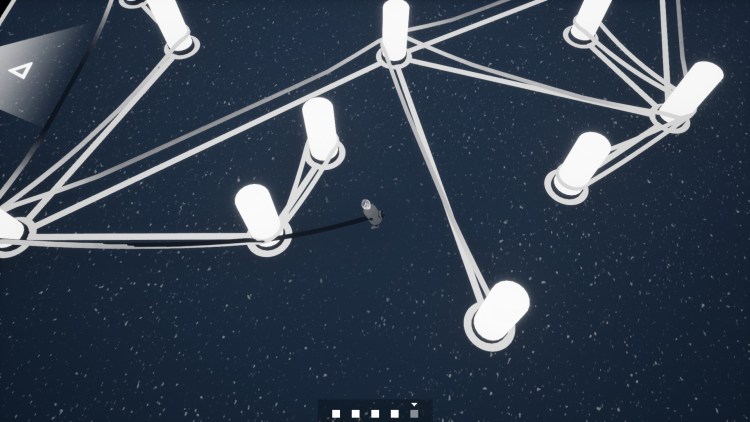The derelict Alabaster floats comfortably at the edge of space where it waits for its first challenger. Your space-faring hero, dubbed Pluto by the ship’s imprisoned navigator, answers that call. Pluto’s knack for exploration is rivaled only by his otherworldly patience, and hopefully, you’re the same. I’m not. Hacking your way through a space cruiser isn’t rocket science — it’s much harder. Filament is no relaxing getaway; the Alabaster’s deceptively cozy halls are home to hundreds of head-scratching puzzles.
Welcome home, captain
You’ll find your stay on the Alabaster to be equal parts comforting and ominous. Despite being hastily abandoned for reasons unknown, the ship retains its homey atmosphere. Its rich color palette and lived-in look are complemented by an encouraging soundtrack with a melancholic streak. As you traverse its many rooms, the ship’s navigator, Juniper, spins you tales about what once was. It’s in unraveling the mysteries left behind the crew that I found a reason to keep at those pesky puzzles.
Juniper’s commentary is directly tied to a number of machines, called Anchors, which you can hack. Punctuating the ship are dozens upon dozens of these Anchors, each housing a set of five puzzles. Only by completing the entire set can new rooms, lore, and challenges be revealed. Filament’s puzzles threw me for a loop when we previewed the game, and they’ve only gotten tougher and more diverse.
Hacking the mainframe
Upon interacting with an Anchor, you’re transported into a closed room, now in control of a cute, tiny robot leading around a glowing cord. You must lead this infinitely extendable cord around the room, ensuring it touches every energy cell to power the exit gate. Wrap around the proper pillars and weasel through spaces in the correct order to advance. Much like a maze, the goal is to arrive at the golden route that leads to the finish. But, like a game of Snake, your robot can’t pass through the taut cord it leaves behind.
The challenge ramps up rapidly, with more and more obstacles to overcome with each passing puzzle. And with puzzles coming in sets of five, you can expect to spend ludicrous amounts of time at each Anchor. As you work your way up the Alabaster’s floors and through its myriad wings, new flavors of puzzles are introduced in the form of additional mechanics. Floor panels, color matching, and multiple robots are only some of Filament’s sick twists. However, we should be thankful; with each new mechanic comes an easy tutorial Anchor to sooth our player egos.
Tried-and-true trial and error proves to be the method of choice for tackling these puzzles. With so many steps in each solution and so many moving parts, planning ahead only gets you so far. Filament’s puzzles are abhorrently difficult to parse. Puzzle structure alludes to certain solutions, but the complexity invites cognitive overload. Keeping track of my potential moves and their order, especially in color-oriented puzzles, was ungodly frustrating. The game expects you to keep iterating on your solutions, but it lacks much-needed footholds to help you manage them.
Slow and steady wins the space race
Fortunately, Filament is not linear; nothing stops you from trying your hand at a different Anchor if one has you stumped. I spent most of my time bouncing between Anchors, subjecting my little robot to all manner of torture in hopes of a breakthrough. I wanted so desperately to know the Alabaster’s secrets, but five puzzles per Anchor wreaked havoc on the game’s pacing. Perhaps I’m an outlier, and you’ll have a far easier time with the puzzles. Yet, with a few hundred puzzles to work through, everyone should expect a huge helping of challenge.
Every completed Anchor prompts new commentary from Juniper and often yields a code that can be entered into nearby computers for additional lore. Initially enticing, these tiny nuggets of story were no longer satisfying rewards for my herculean endeavors. If only puzzles came in smaller sets, split amongst a larger number of Anchors. Of course, a larger ship with more stories to tell would be needed to accommodate — a greedy ask. Clearing any less than five puzzles at an Anchor nets you absolutely nothing; for many, it’s a killing blow to their motivation levels. But I know a great number of masochists who need no other reward than the challenge itself, and those players have my respect and a new game recommendation.
Connection lost
Filament presents both challenging puzzles to solve and an intriguing world to explore, but there’s far too much on one thing on the plate and not nearly enough of the other. Its means of puzzle delivery fails to provide a sense of presence. My interests lie in the Alabaster, but most of my time is spent locked up in a tiny room with a tiny robot. It’s hard not to draw comparisons between Filament and The Witness, which developer Beard Envy undoubtedly drew heavy inspiration from.
The Witness placed heavy emphasis on incorporating the environment into its puzzles and promoted lateral thinking, which only served to strengthen your connection with the game world. At times, it’s as if Filament aims to accomplish the exact opposite. I found myself bouncing back and forth between two very different experiences: Juniper’s relaxing ship tour and cold, crushing puzzle gauntlets. Mechanics aside, puzzle rooms do evolve to incorporate more visual stimuli, but their largely drab looks stand in stark contrast to the Alabaster’s lush visuals.
Everything’s looking shipshape
The nature of the core gameplay loop doesn’t lend itself to long play sessions; Filament is best in moderation. Its puzzles are clever, but they become difficult to appreciate when presented in such large quantities. An Anchor a day keeps the fatigue away. Clearly speed is not something the Alabaster’s puzzles value. I only wish Juniper had more to say — her commentary is a constant reminder of my goals on the ship.
Filament’s environments and competent puzzles are enjoyable in isolation. Story-oriented players will find a lot to love about the Alabaster and Juniper’s lyrical efforts to drown its rooms in emotion. Puzzle fanatics will appreciate the endless deluge of complex hacking and its variety. It’s the melding of the two where Filament struggles to find its footing. Lengthy bouts of disparate puzzle-solving take away from the storytelling, while the Alabaster has only crumbs to offer as rewards for your efforts.












Published: Apr 22, 2020 07:00 pm